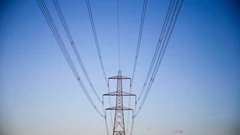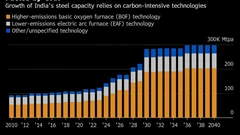New AI Tool Could Boost U.K. Solar by Predicting Cloud Movement
(Bloomberg) -- The U.K. is turning to artificial intelligence to better predict when clouds affect its generation of solar energy, potentially helping to reduce its reliance on fossil fuels as a backup power source.
The country’s National Grid ESO is teaming up with nonprofit Open Climate Fix to design a tracking system that matches cloud movements with the exact locations of solar panels. The tool seeks to provide much greater precision than current weather forecasts.
ESO is responsible for maintaining the balance of supply and demand on the U.K.’s electric grid, down to the second. That was relatively straightforward when all its energy was coming from coal, gas and nuclear power plants. But with solar and wind turbines, a shift in the breeze or a passing cloud can lead to a dramatic shift in supply.
To account for that risk, the grid operator still relies on fossil-fuel power plants that are running in the background and can step in at a moment’s notice. Companies operating those facilities, which mostly burn gas, get paid for being on standby whether or not they end up sending power to the grid — with consumers paying the price.
“If you’re more confident in your forecast, then you don’t need to have as big of a buffer,” said Carolina Tortora, head of innovation strategy and digital transformation at National Grid ESO. “There are a million other issues, but this is a big one.”
Solar power is particularly tricky to manage. Right now, ESO doesn’t even know where all of the nation’s solar panels are. While some are in large arrays that are easy to locate, many others are affixed to rooftops all across the country. Even with a perfect understanding of the clouds, it would still be difficult to predict exact power supply. That’s why ESO also has a project underway to map out the U.K.’s solar resources.
When it comes to predicting the weather, forecasts of the sun have traditionally covered only broader areas. Open Climate Fix will use machine learning to analyze satellite imagery and pinpoint if expected cloud movements will shade specific solar panels.
If all goes to plan, the data will be available to the grid’s control room operators in about six months, Tortora said. That added insight will give ESO greater confidence in real-time power supply, allowing the company to cut down on fossil fuel reserves and have time to turn on other power sources such as batteries.
More stories like this are available on bloomberg.com
©2021 Bloomberg L.P.
KEEPING THE ENERGY INDUSTRY CONNECTED
Subscribe to our newsletter and get the best of Energy Connects directly to your inbox each week.
By subscribing, you agree to the processing of your personal data by dmg events as described in the Privacy Policy.
More renewables news

House Committee Says It Finds Evidence of ‘Climate Cartel’

WEC Energy Offered $2.5 Billion US Loan for Renewable Projects

With Trump Looming, Biden’s Green Bank Moves to Close Billions in Deals

GE Vernova Expects More Trouble for Struggling Offshore Wind Industry

Climate Tech Funds See Cash Pile Rise to $86 Billion as Investing Slows

GE Vernova to Power City-Sized Data Centers With Gas as AI Demand Soars

Longi Delays Solar Module Plant in China as Sector Struggles

Australia Picks BP, Neoen Projects in Biggest Renewables Tender

SSE Plans £22 Billion Investment to Bolster Scotland’s Grid
















